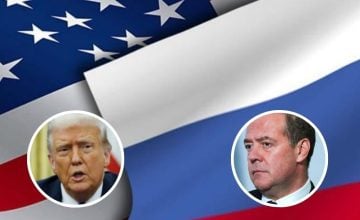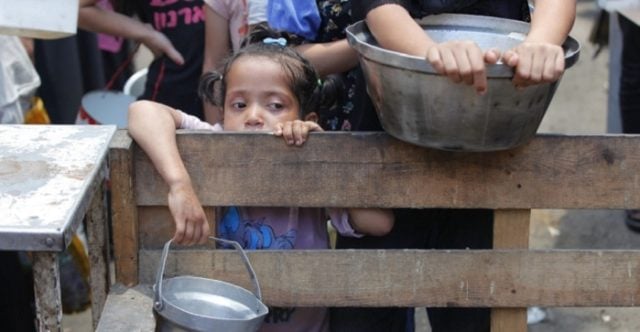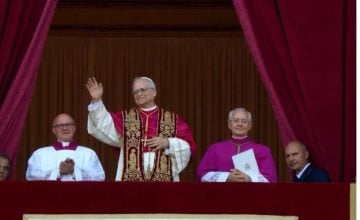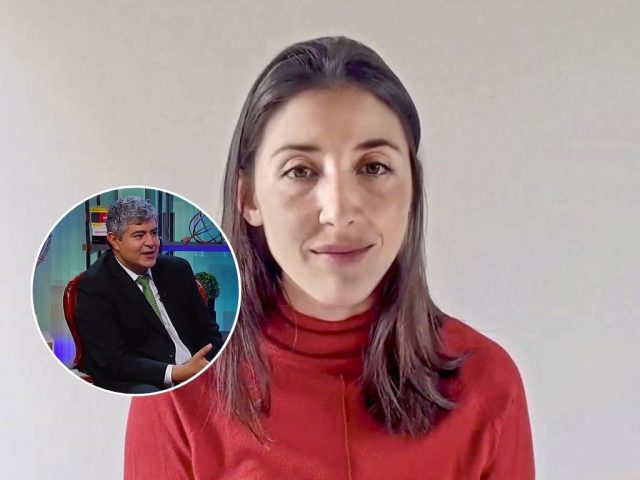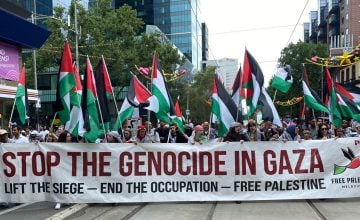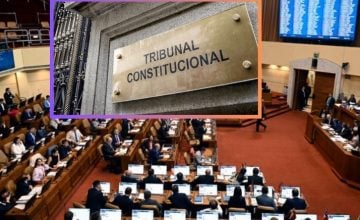Salvador Allende was born on June 26, 1908, into a middle-class family in Valparaíso. As a child, he traveled the country because of the work activities of his father, a lawyer who held various political offices.
In 1924, he entered to study Medicine at the University of Chile. Driven by his deep social vocation, in 1929 he joined the university political group «Avance», becoming an important reference in the student movement. At the age of 25, he became the first regional secretary of the Socialist Party of Chile.
Upon obtaining his degree as a surgeon, Allende dedicated himself to social medicine, leaving various written works on public health as a legacy. Before turning 30 years of age, he was elected Deputy for Valparaíso and Quillota.
Under the government of President Pedro Aguirre Cerda, he served as Minister of Health. In 1945, he was elected Senator, coming to preside over the Upper House of Congress.
After three unsuccessful candidacies to reach the presidency, on September 4, 1970 Salvador Allende was elected president of Chile, supported by the historic coalition of left-wing parties called Unidad Popular (Popular Unity-UP).
That fact marked the country and Chilean society, and became, for many of the followers of his legacy, the happiest day in the nation’s history. However, his triumph would also mean the beginning of a political persecution that not only ended the mandate of the people, but also deeply damaged several generations, up to the present day.
His conviction was that socialism could be built on the basis of democratic traditions, in what would be defined as the Chilean road to socialism; In addition, he promoted important political, economic and social reforms that transformed the country, such as the nationalization of the large copper mining industry and the deepening of the agrarian reform.
For the first time, the people had their own destiny in their hands. Equal opportunities and rights were a tangible reality and a dignified and just life was being guaranteed by Allende.
During the Popular Unity government, Chilean culture flourished deeply in political and artistic references such as the singer-songwriter Víctor Jara (assassinated by the dictatorship on September 16, 1973) or the 1971 Nobel Prize for Literature, Pablo Neruda, who died on September 23, 1973. .
His words and his revolutionary measures were openly opposed to the order established by the United States in the region, and affected the interests of the oligarchy and right-wing sectors of the country, who began a campaign of economic destabilization against the government.
With the inauguration of Salvador Allende Gossens as President of Chile on November 3, 1970, the most ambitious process of social, economic and political change that Chile has witnessed throughout its history began in the country. As the principal reference of Popular Unity, Allende not only became the first socialist leader in the world to be democratically elected, but also the first to try to transition to socialism through a peaceful path, also called the Chilean path to socialism.
In the agricultural sector, Allende deepened the agrarian reform process initiated by the government of Jorge Alessandri and accelerated by that of Eduardo Frei Montalva.
In the health area, hospital equipment was improved and a program for the distribution of half a liter of milk daily to each child was established. In education, preschool, basic and industrial education was promoted, in addition to expanding the access of students to the university. The most emblematic project in this matter was the so-called Escuela Nacional Unificada (Unified National School ENU).
Salvador Allende’s legacy with the Popular Unity government ratifies the deep value of the republican spirit with a president who was capable of giving his life to defend democratic institutions in all their splendor. Allende is the voice of the broadest intellectual, political and ideological expressions of the left, put to work in favour of satisfying popular needs.
Furthermore, even more to be valued, is his figure of a revolutionary president, who was capable of carrying out a set of actions made available to improve the living conditions of thousands of workers in our country. With Allende, the revolution was not a slogan. It was transformation and change with a perspective of the future.
The democratic transition and the post-dictatorship shaped two lefts: one functional to democracy, narrow and insufficient, that the dictatorship shaped with blood and fire, characterized by its complacency and low level of self-criticism; and another, deeply critical of the process, but with a low level of influence and coordination in the political spaces where decisions are made.
According to Esteban Valenzuela, PhD in Contemporary History, the great works of the Allende government were:
-The Nationalization of copper
Patricio Meller, an economist linked to the Christian Democracy, demonstrated a paradox: while Allende implemented the nationalization of copper, the State obtained a low collection due to the low international price and the lawsuits the North American companies made against the State, but later, the dictatorship disposed of ten billion dollars between 1974-1987 because of the nationalization. It became the ‘main beam’, Chile’s salary, the support in the midst of a dictatorship that lowered taxes to private companies to a minimum.
The dictatorship managed to sustain the central government thanks to nationalization:
«The total impact of the nationalization of Large Mining has meant that during the period 1974-1987 the Chilean economy has had a volume of additional income, which rises to 9.5 billion dollars (of 1987)».
Orlando Caputo and Graciela Galarce explained the process of progressive denationalization, both under the dictatorship (with its Mining Code that allowed the return of large international private capital) and with the Concertación that did not limit said entry or expand the State-owned Codelco with greater force. While the State controlled 94% of copper mining in 1973, in 2007 it was only 31%.
Let’s make history of what could have been: in 2012, the State-owned Codelco, with 30% of the copper production, contributed 10 billion dollars in one year to the State, the private companies with 70% of mining, only 5 billion in taxes. If Codelco had maintained supremacy with good management and an investment portfolio, it would contribute over 30 billion dollars a year to the Chilean government.
The exercise is done for the year 2012, when it dropped from four dollars to 3.6 a pound of copper, since 2011 was even more notable. That is why it is said in the public squares and in the protests: ‘With copper nationalized, as Allende did in Chile, there would be no poverty’.
This idea is part of the popular common sense that is said, with more and more force. It was Allende’s great reform, hand in hand with the step taken by Frei, which continues to be very fruitful in Chile. During the Bachelet government, the country created a surplus copper savings fund to give sustainability to social pensions.
The nationalization had an enormous economic and income impact, but it was also a hard test to demonstrate that Chilean workers and professionals were capable of managing the mega-industry of copper.
When it became Chilean (1965) at the time of Frei, it implied that the Chilean State owned 51% of the Copper Mining, but it continued to be managed, basically, at a management level, by foreigners, that is personnel from a transnational company.
The nationalization, which had the unanimous support of Congress, caused a stampede of American engineers, managers and personnel of other nationalities.
It is the time of the Cold War, a time of fear, in which the diaspora of “business intelligence” is taking place. The «know how» (how to do) of managing a mega copper company was compromised and the question arose whether Chilean engineers and managers would be capable of managing and projecting copper mining, 100% in the hands of the State.
In the act of promulgation of the law in the winter of 1971, in the Plaza de Rancagua, capital of the province of the largest underground copper mine in the world, El Teniente, President Allende lists the series of productive problems of the company, He mentions challenges that began to be studied and designed in those years and that would come to fruition during the seventies: the expansion of the Caletones Foundry and the creation of new levels in the mine to expand production.
Despite the strikes and the division among the workers themselves, Chilean engineers and managers were able to demonstrate that they could manage a State-owned Codelco, which laid the foundations of the mega-company that not even the dictatorship dared to privatize: it was just too good of a business for all Chileans.
-The deepening of the Agrarian Reform
According to John Strassman, who was director of the Center for Development at the University of Wisconsin, the agrarian reform of Frei and Allende was the pillar that modernized Chilean agriculture and made it competitive for exports. Without the agrarian reform, Chile would have continued in semi-feudal and backward relationships based on the hacienda (the land estates).
The data is eloquent: in three years the UP almost doubled the expropriated hectares in the Frei government: between 1965-1970, 1,319 properties with 3,400,000 hectares; with Allende 4,400 properties with 6.4 million hectares. Over time and after the ‘passions’ subsided, almost everybody unanimously recognizes the virtue of a process that began with Alessandri (800,000 hectares), and that contributed to giving peasants dignity and improving production, by delivering highly concentrated idle land to producers. The managers of the reform postulated that the cause of both problems was the poor distribution of agricultural land: on one hand, the concentration of 78% of agricultural land in the hands of 7% of the producers, and, on the other, the atomization of the land in the hands of small farmers who constituted 37% of the producers and who had to distribute 0.3% of the land.
-Higher education for all social classes
The Chilean higher education system was of quality, but very elitist, on a par with Latin American countries. Suffice to remember that around 1965 only 20% of young people finished high school and only 3% of the population between 18 and 25 years of age attended the restricted university system of eight institutions, according to José Joaquín Brunner:
“It was a small institutional apparatus made up of eight universities, which represented the evolutionary culmination of a peculiar mixed system of provision of higher education. It was made up of two State institutions -one created in the first half of the 19th century, the other in the 20th century- and six private universities, three of them founded within the confessional domain of the Catholic Church and another three, non-denominational, created in regions with State support; in one case by a large businessman from Buenos Aires and in the other two by elite groups within their respective local communities. The national income -with a fiscal expenditure equivalent to 1.08% of the GDP- almost completely financed this minimal system that served just 55,000 students in 1967, with a gross coverage rate of 7.1%, at a time when the State had just universalized primary education and secondary education excluded 79% of the young people of the respective cohort”.
The Popular Unity expanded public university campuses in regions, highlighting areas that had never had an offer, such as Osorno (later Universidad de Los Lagos) or Rancagua, which had the program for university technicians for workers at the State Technical University.
The National Institute of Technical Training (Inacap); Created in 1966, was added to the expansion in Santiago and other regions. All of them –DUOC, UTE and INACAP– made agreements with the Central Unitaria de Trabajadores (Central Union of Workers).
This first relevant university expansion increased enrollment in higher education from 50,000 to 150,000 between 1967 and 1973. Then came the privatizing expansion of the dictatorship from the year 1982 and the high growth under the Concertación to exceed 50% of young people in some of the 240 higher education institutions by the year 2009. Although, with the asymmetries of quality and high cost for families imposed by the model. This is highlighted by a study by Flacso, which also highlights that women reached 41% of the enrollment in said period:
“8 thousand students in 1940, 24 thousand in 1960, 55 thousand in 1967 to 155 thousand in 1973”.
-Housing solutions
Chile experienced a demographic explosion since 1940, like all of Latin America, placing the housing deficit at half a million units in 1970. The seizures or invasions of land have been increasing since 1957, with emblematic seizures such as La Victoria in the southern area of Santiago or 25 de Febrero in Rancagua.
In the Frei government, the Ministry of Housing was created and site or ‘chalk’ operations were produced, in which at least a piece of land was demarcated for a family to encourage self-construction processes for families without a savings capacity and without formal jobs.
With Allende’s victory, a more active policy began, giving the State a role in granting housing directly and not just spending the resources in savings banks.
The period 1970-1973 was characterized by annual plans, which were the motors of the social policy of that time, and whose basic principle was the conception that housing is an asset to which all inhabitants have a right to, and its distribution can not be governed by economic rules, but by necessity and social conditions.
The role of the State would now be more active and within its principles it was stated that it should be the owner of the land, and in charge of building and controlling it, in accordance with urban and social requirements, which should take precedence over those of a speculative nature. The new foundations of fiscal management provoked the reaction of those business groups involved in the construction sector, while encouraging workers and residents at the start of the nationalization process of said companies.
What UP was doing, was a relevant policy change. In Latin America, what was proposed by the British John Turner prevailed: give the land to the poor so that they can build where they themselves have invaded. It was a step to recognize the poor a place to live, but often abandoned in terrible conditions and without sewage or water.
Allende wanted to massify housing solutions from the State, not just specific experiences (cases of neighborhoods for workers had been known since 1890, but they were few solutions), for this reason the Popular Housing Factories program was launched, in an ambitious plan called 20,000 /70, which sought to build twenty thousand solutions a year. Six thousand solutions were counted in 1971, far from the goal, but much more than what was achieved by decades of governments focused on the middle sectors. It was pointed out that the State should focus on the poor and not just give them a piece of land.
-Welfare, school and child nutrition
Within the framework of the first 40 measures of Popular Unity, it is possible to find five that were linked to this objective:
a) The child is born to be happy: the objective of the program was to provide completely free tuition, books, notebooks and school supplies at no cost, to all children in basic education.
b) Better nutrition for the child: it consisted of giving breakfast to all elementary school students and lunch to those whose parents could not provide it.
c) Milk for all children in Chile: ensured the delivery of half a liter of milk daily as a ration to all children in the country
d) Maternal-Infant Clinic in its population: it consisted of the installation of maternal-infant clinics in all populations.
e) True vacations for all students: it consisted of an invitation to the Presidential Palace in Viña del Mar for the best elementary school students, selected from all over the country.
Of this set of measures, the one that had the greatest significance was that of half a liter of milk for everyone. In spite of the problems of application that it had in full government of the Popular Unity.
The commitment of ‘half a liter of milk’ was maintained through thick and thin during the thousand days that the presidency of Salvador Allende lasted. When domestic production could not cope, powdered milk was imported. This rose in price and foreign exchange was scarce, but no child stopped receiving their half liter of milk. In 1970, before the People’s Government was established, 650,000 people, particularly children, had received free milk. In 1971, 47 million liters were distributed free of charge, a similar amount in 1972 and, despite all the difficulties, 49 million in 1973, benefiting 3,600,000 children.
Such was the success and the link between ‘half a liter of milk’ and the needs of the population, that it became one of the UP measures that the civic-military dictatorship was subsequently unable to eliminate, despite the profound State aid reforms. which it implemented under the neoliberal doctrine of the Chicago Boys.
-Promotion of mass reading
The Popular Unity made an enormous innovation by bringing books and magazines accessible to the public to thousands of homes, through Editorial Quimantú.
The working-class families had no doubts in buying for modest sums a complete library of Quimantú’s universal and Chilean classics, and some of its magazines such as Nosotros los chilenos (We the Chileans) and Hechos Mundiales. By the way, Jack London and other classics were put together with books by revolutionary authors… The same ones who ended up in a bonfire in the yard of many houses due to fears of raids in the unfortunate hours of September 1973.
Quimantú was born from the expropriation of the Ziz-Zag publishing house, encouraged by the workers themselves, operating from November 1971 until the coup. It printed ten million copies of 250 titles, in the following collections:
Quimantú for everyone, Mini books (works of universal and Chilean literature), We the Chileans (mini reports with illustrations about the Chilean being), Cuadernos de Educación Popular (Booknotes on Popular Education by Marta Harnecker), Cuncuna (children’s collection), Camino Abierto, Análisis y Acción, Classics of Social Thought, and important Figures of America.
In Quimantú para todos – Quimantú for Everyone (47 volumes), the already mentioned Jack London with Llamado de la Selva (Call of the Wild) was published, as well as the novels of Francisco Coloane’s journeys, a Sexual Education Manual by Rodrigo Quijada, as well as the novel by Nicomedes Guzmán, La Sangre y la Esperanza (Blood and Hope), which portrays poverty in the Yungay neighborhood of western Santiago at the beginning of the 20th century.
-Software for public companies
The project was called Cybersin and it belonged to Corfo.
This innovation began when Fernando Flores, director of Corfo, together with the engineer Raúl Espejo, the designer Rodrigo Walter, among others, brought the Englishman called Stafford Beer, a cybernetic theorist, to Chile.
They meet with Allende and set out to ask all the companies in the Social Property Area to report their main needs for inputs and product stocks via Telex (fax), which were typed into a gigantic IBM computer purchased for the case, and it had to process and provide feedback to them with the most urgent needs.
The system had the opportunity to demonstrate its usefulness in October 1972, when 50,000 unemployed truckers blocked the streets of Santiago; Using the teletype machines, the government was able to coordinate the transport of food to the city with the approximately 200 trucks loyal to Allende and who were not unemployed.
Commenting on this fact, Beer modestly noted:
“Communication is control. After the coup, the control center was destroyed. Cybersyn or Synco could never be applied and was irrevocably aborted, frustrating one of the most advanced political and cybernetic projects of the time in the world (…) In the control center in Santiago, a computer daily processed the information received from the factories. By processing such information, short-term predictions and recommendations for improvements were obtained. There were four levels of control (company, branch, sector and total) that had algedonic feedback (if the lower level of control could not solve a problem in a given time interval, the higher level was notified about it). The results were discussed in the operating room and an overall plan was drawn up. The Synco project software was called Cyberstride and used Bayesian control. It was written by a team of Chilean programmers in consultation with 12 British programmers.
The experience was not in vain; and many university students, technicians, and business executives understood the importance of computerization and networks early on. The allendistas were revolution and modernization, openness to innovations.
Understanding computers as instant spaces to communicate and coordinate -not just process pre-formatted information- was effectively one of the derivatives that led to the creation of the Internet.
The UP was getting ahead of the US Ministry of Defense, “official” creators of the web. Let us remember that since 1962, the researcher J.C.R. Licklider, from the Massachusetts Institute of Technology, proposed using computers to share data, the Galactic Network, but only around 1972 -contemporaneous with the Chilean Cybersin experiment- was it tested with network transmissions.
-Museum of Solidarity
Another of the great creations of the Popular Unity was the construction of the first museum of solidarity that brought together works by great artists from around the world. This creation is presented as an innovation for two reasons:
1. Universal Art Space: Salvador Allende’s idea was to create a space where different cultures would meet in a common space and where the most vulnerable sectors of our society could access culture for free.
2. International solidarity for the socialization of art: the museum was made up of solidarity donations from creators committed to the Chilean socialist construction process, for which they delivered their works for free. In this way, between 1971 and 1973, more than 500 works were received, including paintings, engravings, sculptures, drawings, tapestries and photographs.
Despite the fact that this initiative is known by few, it is important to point out that it marks a milestone in the way the museum is created. Its international and supportive nature sets a precedent as an innovation in cultural diffusion projects.
-Other works
The trips to popular resorts that claimed the right of the poor to travel to the beach and rest (today popularized in hundreds of municipalities with their bus rides, like the formerly popular trains to Constitución, Dichato, Cartagena or Pichilemu), the State support to music with Chilean folk roots, communities of workers and employees in «rich» areas of Las Condes (the dictatorship expelled them to the margins of the city), social integration in academies and schools, among many others.
Finally, Allende is the very expression that the relationship between idealism and pragmatism, reformism and revolution, realism and utopia, are perfectly in dialogue, constituting the dialectical encounter needed so as to achieve the objectives that a society sets for itself. He teaches us that behind each act, there is a spirit and a motivation.
Spanish version:





